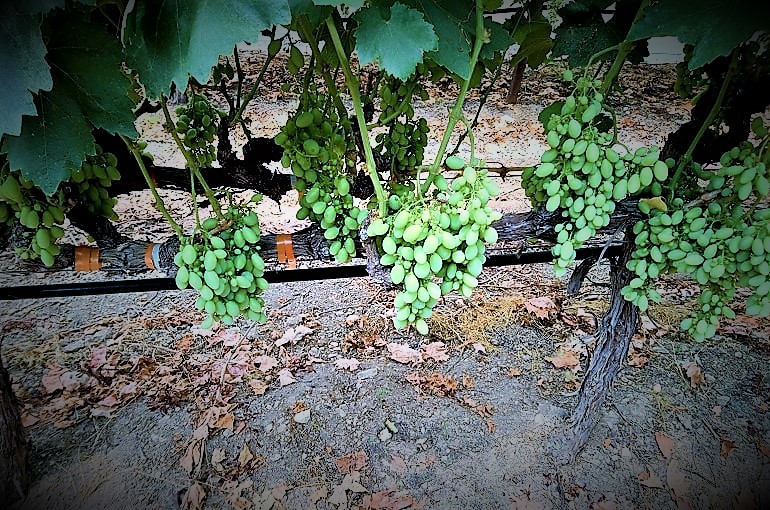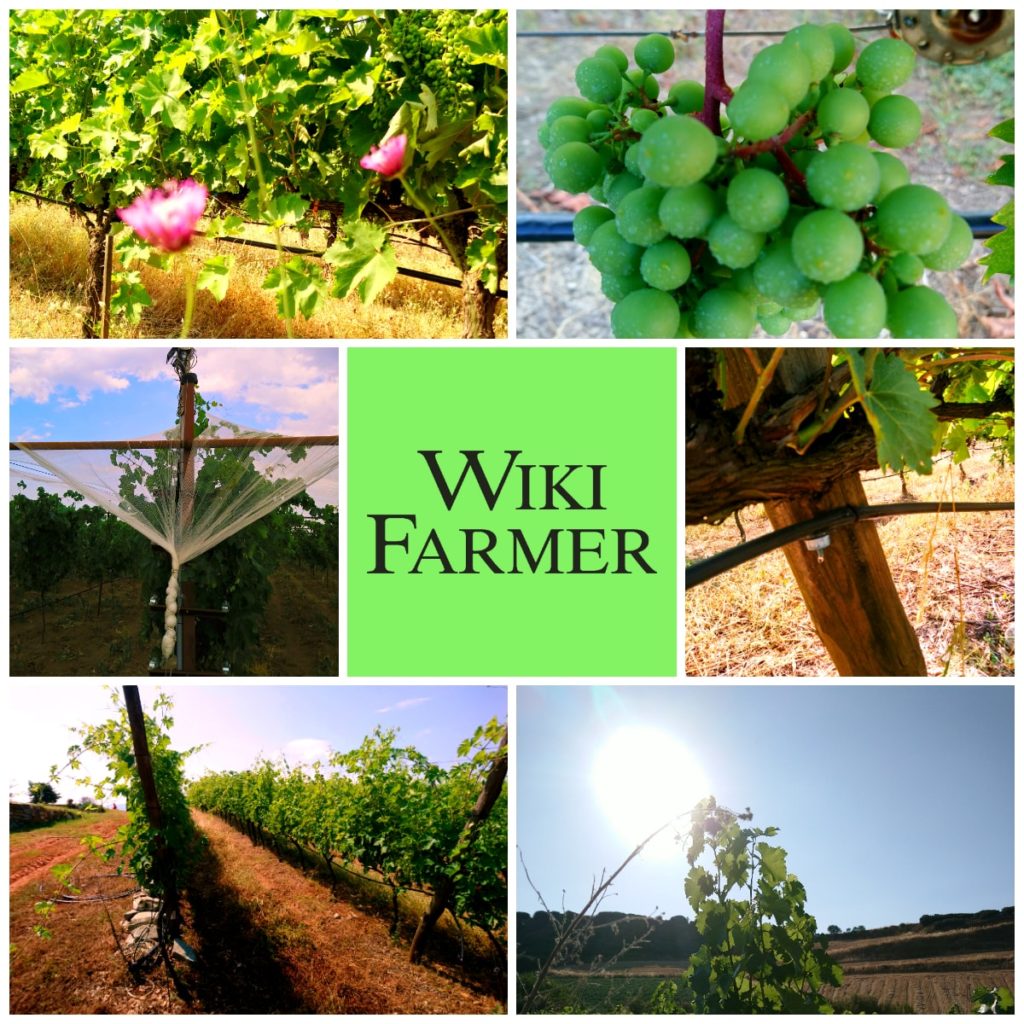Grapes Fertilizer Management

This post is also available in:
This post is also available in:
![]() Español (Spanish)
Español (Spanish) ![]() Français (French)
Français (French) ![]() Deutsch (German)
Deutsch (German) ![]() Nederlands (Dutch)
Nederlands (Dutch) ![]() हिन्दी (Hindi)
हिन्दी (Hindi) ![]() العربية (Arabic)
العربية (Arabic) ![]() Türkçe (Turkish)
Türkçe (Turkish) ![]() 简体中文 (Chinese (Simplified))
简体中文 (Chinese (Simplified)) ![]() Русский (Russian)
Русский (Russian) ![]() Italiano (Italian)
Italiano (Italian) ![]() Ελληνικά (Greek)
Ελληνικά (Greek) ![]() Português (Portuguese (Brazil))
Português (Portuguese (Brazil)) ![]() Tiếng Việt (Vietnamese)
Tiếng Việt (Vietnamese) ![]() Indonesia (Indonesian)
Indonesia (Indonesian) ![]() 한국어 (Korean)
한국어 (Korean) ![]() polski (Polish)
polski (Polish)
How and when to fertilize grapes – Vineyard fertilizer requirements
First of all, you have to take into consideration the soil condition of your field through semiannual or annual soil and tissue testing before applying any fertilization method. No two fields are the same, nor can anyone advise you on fertilization methods, without taking into account your soil’s test data, tissue analysis, and crop history of your field.
The most commonly used methods of fertilization are top dressing, foliar fertilization, and fertigation (injection of water-soluble fertilizers inside the irrigation system). Nowadays, precision agriculture uses high technology in the field, providing the producers with accurate measurements of any specific vine’s needs.
As a general rule, during the start of the growing period, the plant needs more N to develop leaf surface and photosynthesize. During the fruit growth, the plants need Potassium to produce well-formed grapes. Phosphorus is always required, as it plays a vital role in the transportation of nutrients. Moreover, during the first years after planting, Phosphorus helps the plant develop a healthy root system. In many cases, young plants established on acid soils cannot make efficient use of Phosphorus. Thus, many farmers apply pre-planting P2O5. Calcium controls ripening and coloring of the fruit and is very important for the production of uniform grapes.
The first application is performed at the end of winter (February). Many farmers apply well-rotted manure and plow well with a ripper. A couple of weeks later, farmers may apply Urea during the start of the growing period, to help the plant develop a greater leaf surface. Other producers, apply N based Foliar Fertilization. Other farmers also apply well balanced slow-release granular fertilizers (12 – 10 – 20 (+28) + 2MgO + ΤΕ – 500 kg per hectare – 12 weeks release), during the start of the growing period, so that the plants will have the proper time to absorb those nutrients gradually. In many cases, producers apply KNO3 during maturity. Potassium is also believed to help grapes acquire an intense red color. (Keep in mind that 1 hectare = 2,47 acres = 10.000 square meters and 1 ton = 1000 kg = 2200 lbs.)

Some farmers use seaweed extracts (Ascophyllum nodosum), while others apply nano-size Ca-based fertilization, especially on alkaline soil. A study revealed that the application of nano-size Ca-based fertilizer led to remarkable enhancements in foliar development and chlorophyll concentration of the vines cultivated on alkaline soil. The application of Seaweed extracts also enhanced the leaf Zn chlorophyll content of the grapes. You can read more here.
The type and the amount of fertilizers required in a vineyard depend on many different factors. The soil type, the age of the plant, the training system, the environmental conditions, together with the variety, and the type of the vineyard, are all crucial factors. The plant has different nutrient requirements during the different development stages.
As the plant reaches maturity, potassium requirements are on their pick, while nitrogen needs are minimal. During this stage, the plant delivers its nutrients to fruits to increase their sugars, phenolic, and aromatic substances content.
The time of fertilization also differs among different vineyards. For example, in non irrigated wine grape vineyards, some producers prefer to apply the entire amount of fertilizers during winter as a slow-release top dressing. In irrigated vineyards, they use 50% of the N and K, together with 75% of P and Mg as a top dressing. They apply the rest of the N and P after the fruit set stage, and the rest of the K is supplied in 3-4 applications. In areas of high soil CaCO3, it is possible to observe Fe deficiency. Thus producers may provide chelated iron forms either through fertigation or by using foliar sprays. Foliar fertilization can help us address short term deficiencies very quickly. However, it normally cannot substitute other types of fertilization. Soil applications generally have more lasting effects.
However, these are just common patterns that should not be followed without doing your research. Every field is different and has different needs. Checking the soil condition and pH is vital before applying any fertilization method. You can consult your local licensed agronomist.
Nutrient Deficiencies and Toxicities in Vines.
Nitrogen: The most common nitrogen deficiency symptoms on vines include chlorosis of the lower leaves, combined with low growth and relatively small grapes. On the contrary, over-fertilization with N will cause a high growth rate and overproduction of shoots, something that will compete hard and may inhibit the fruits growth. As a result, we have low-quality fruits containing insufficient amounts of sugars, while at the same time, acids content may increase. Besides, the overgrowth of the vine has another negative consequence. Too much foliage is produced, causing overshadowing and insufficient air circulation. These, in turn, increase the risk of disease outbreaks.
Potassium: Potassium deficiency is expressed with peripheral and interveinal chlorosis of the foliage. Meanwhile, K deficiency causes significant problems for the production. Symptoms include production decline, delay in maturity, and small grapes. It may also affect the sugar content of the fruit, reducing its commercial value. Excessive K quantities, on the other hand, may cause a deficiency of other nutrients, such as Mg or Zn, as they are competitive elements.
Boron: Lack of boron causes several problems on vine grapes, such as chlorosis on younger leaves, unequal foliage and berry growth, reduced fruit production, and absence of seeds in fruits.
Magnesium: Magnesium is absolutely necessary for the synthesis of sugars, which play the most significant role in defining the unique organoleptic characteristics of each grape. Magnesium deficiency often appears because of high potassium intake. It is also common in sandy, acidic soils. Symptoms include chlorosis and leaf margins necrosis.
Phosphorus: Lack of Phosphorus is not so common as a lack of Nitrogen is. However, It appears often during cold periods, at acidic or very alkaline soils, poor in organic matter, or rich in iron. Lack of Phosphorus is first expressed through small red dots on leaves. Symptoms include a decline in photosynthetic capacity, fertility, and fruit set. As a result, vines produce a reduced yield.
Calcium: A calcium deficiency is possible in cases of sandy soils, pH levels lower than 5,5 combined with high drought conditions or increased sodium. Contrary to other deficiencies, a Calcium deficiency is not expressed in the leaves, but rather in the berries.
Iron: We may observe iron deficiency in alkaline waterlogged soils, with increased levels of copper or manganese. Symptoms appear primarily on the youngest leaves, causing interveinal chlorosis.
Zinc: Zinc deficiency is expressed mainly on young leaves. They become pale, while we can observe an asymmetry (one half of the leaf is much smaller and deformed than the other).
You can enrich this article by leaving a comment or photo of your vineyard’s fertilization techniques.
Viticulture Definition – What is Viticulture?
How to Grow Grapes for Profit- Commercial Grape Grower’s Essential Guide
Soil Requirements and Preparation for Grapevine Farming
Grapevines Planting and Plant spacing – Number of plants per hectare
Grapes Training Systems and Methods
Vine Pruning, Defoliation and Thinning
Grapes Irrigation and Water Management
Grapes Fertilizer Management
Common Grapevine Pest and Diseases
Grape Harvesting – When and How to Harvest Vineyard
Grape Yield per Hectare and Acre
The use of Technology in Contemporary Viticulture
Do you have experience in commercial Viticulture? Please share your experience, methods and practices in the comments below. All the content you add will be soon reviewed by our agronomists. Once approved, it will be added to Wikifarmer.com and it will influence positively thousands of new and experienced farmers across the world.








































































